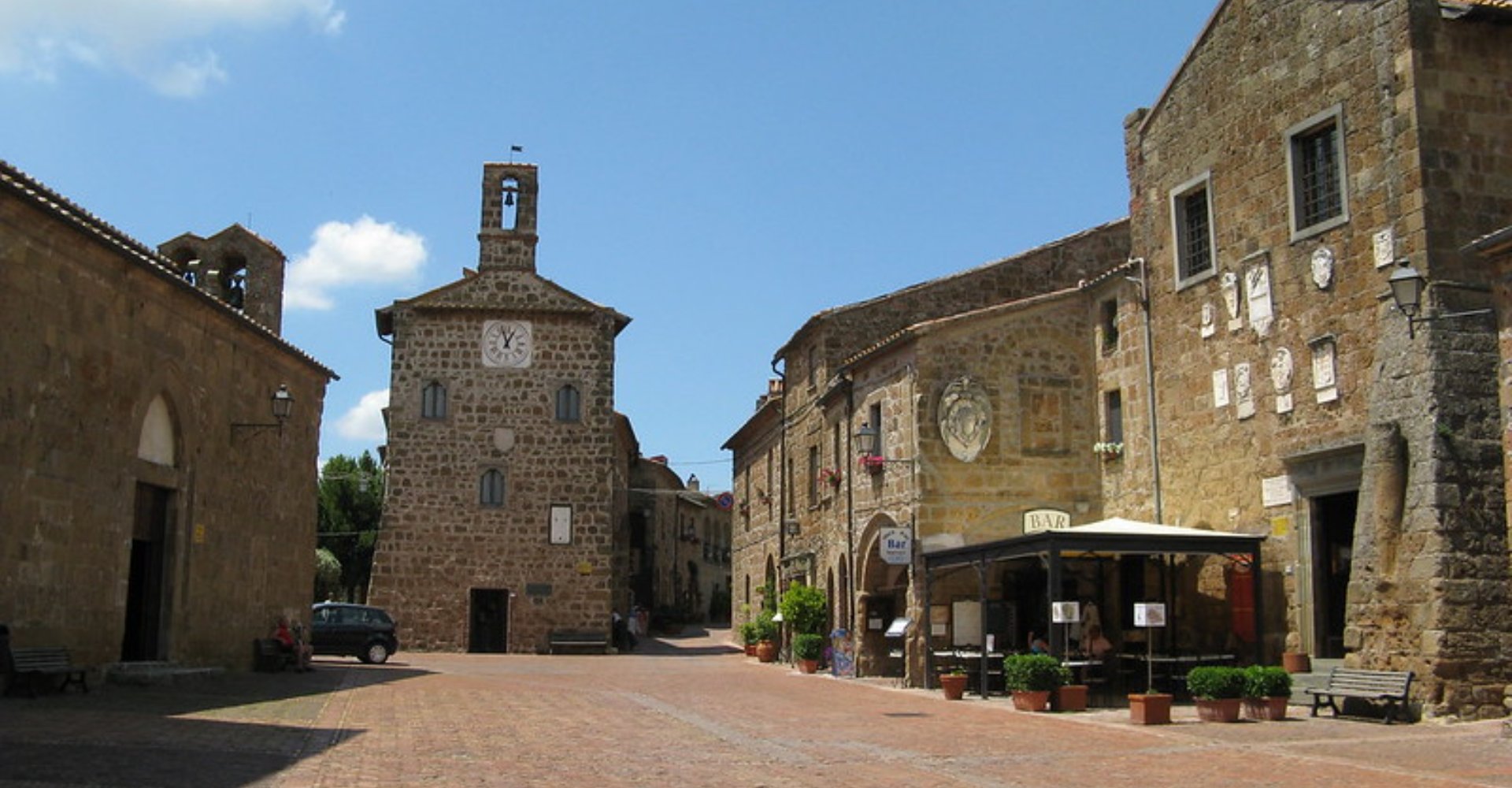The Rocca Aldobrandesca is one of the town’s main attractions: sitting atop the foundations of a castle built by the family in the 11th century, it vaunts a fortified tower and is part of the defense walls on the most accessible side. It underwent important renovations thanks to the Medici, but in the years that followed, the fortress was stripped of its defense role and fell into disuse.
On the opposite side of the city, down a cypress-shaded avenue, is the Cathedral of San Pietro, considered to be Sovana’s main monument and one of the historic example of transition from the Romanesque to Gothic eras. Built atop the ruins of an older church, probably dating to around the 11th/12th century, the church vaunts a stone façade that extends onto one of the sides. The interior, restored in 1999, is divided into three naves by cruciform pillars that support a rib-vaulted ceiling over the central nave. The historiated capitals depicting biblical scenes and the priceless holy water font from 1615 are characteristic of the church. Before leaving, don’t forget to visit the crypt, which conserves the remains of St. Mamilian, who evangelized Sovana.
Jumping back in time, the necropolis in Sovana is a veritable treasure thanks to the variety of tombs and examples of Etruscan architecture. No visit to the Tomb of the Winged Demons, the Ildebranda Tomb and the Etruscan “streets” – the so-called Vie Cave – is complete without also admiring the objects found at the entrance to the “Cavone,” now conserved in the San Mamiliano Museum in the evocative piazza del Pretorio. Some of the most important discoveries included a small vase containing 498 gold coins, the legendary treasure of Sovana, recently stolen.
